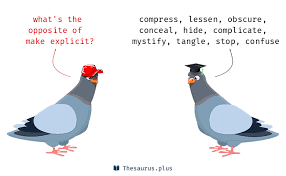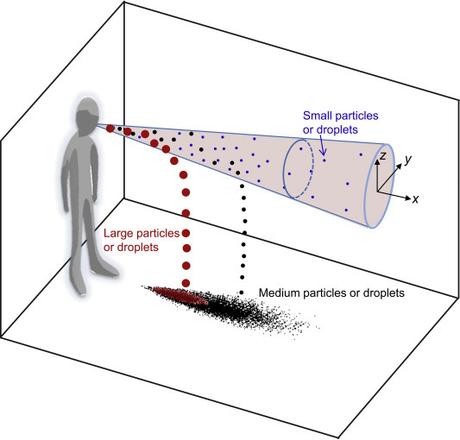In the crucial month of February, in those weeks before the major outbreak in Europe, there was still room to stock up on protective equipment, to scale up the laboratories, to expand the purchase and production of test materials, to prepare for the removal of serum with antibodies in healed patients. Only, it didn’t happen. We are wondering why?
Our hypothesis is that a lack of thinking skills among governments, health institutions, and the population has seriously contributed to the spread of the Coronavirus.

In our first post Thinking about the Spread of the Coronavirus, we substantiated the hypothesis on the basis of a number of concepts that we previously examined in the Thinkibility blog. In this post, we explore one of those lack of thinking abilities: conceptual thinking.
What are the concepts that play a role in thinking about the spread of the virus? What do they actually mean? Are alternative concepts conceivable? What are the assumptions behind each concept? Are phenomena framed? What words are used? Which not? Can we find concepts in the words people use frequently. They may reflect thinking patterns.
Word Alert!

If words occur frequently and are echoed like mantras, this may indicate deliberate “framing”. This means that a situation is presented in a manner favorable to the communicator. What is denied or camouflaged? Be alert! Some examples:
There is little chance that ... The Coronavirus is 'Just Like The Flu'... The patients are all old age and have "underlying suffering health issues"... The elderly and the most vulnerable...
Words as Concepts
Words express thoughts or ideas. Words are attempts to get a grip on reality. They define what information you need or what to look for. It determines your understanding of the situation. and the actions you are considering or taking. And not!

Words are thinking filters and at the same time they define and interpret phenomena, they limit alternative explanations as well. So, it makes sense to make an inventory of the terms (words) used and think about them explicitly.
Some examples you may try to describe for yourself. Use them as starting points for Critical Thinking – that is actively and skillfully conceptualizing, applying, analyzing, synthesizing, and evaluating information.

- Virus, Symptoms, Infection, Disinfection
- Contagiousness, Diffusion rate, Contamination degree
- Immunity, Herd Immunity, Incubation, Incubation time,
- Lockdown, Smart or Intelligent Lockdown, Targeted Lockdown, Social Isolation, 1.5-meter Economy, Quarantaine;
- Health risk, Contamination Hazard, Testing rate
- Death rates, Residence Time on an IC.
- What is the meaning of the word? What tries it to express? What should be achieved with it? What is its function?
- What is the underlying idea or mechanism, the way the function is executed?
- How could you measure or test what the word means to express?
- What are alternative words, functions and how it is reached?
- What other questions does the word raise?
Make it explicit

We are quite sure that most of the politicians, journalists, and even health experts would have the greatest difficulties to concretely describe the Corona terms above.
At the beginning of the crisis, we suppose as we haven´t it seen yet, no conscious attempt has been made to make explicit the terms used and to apply them to gain a better understanding of the situation and to identify blind spots in knowledge and information.
In our opinion, the thoughtlessness with which words are used, as confidence-inspiring but empty sounds, has led to the dramatic accumulation of miscalculations and further blundering into a disaster. In the next examples, we will illustrate this compelling nature of words.
IC-beds
From the beginning, IC capacity has been central to the approach of governments and health authorities since the beginning. It is an explicit policy objective: to try to prevent the IC from being overloaded. The Coronavirus is defined as a problem of IC-capacity.

What if it had been defined as a logistic problem? As a problem of the availibility of mouth masks, respirators, aprons, test materials, even intravenous drip: the list of needed medical equipment is endless, but none of the policy makers has timely thought about it. Not because they are not able to, but due to a lack of anticipatory thinking and system thinking skills. After all, we must not forget that in most Western democracies the top 100 civil servants, the majority studied law, economics, and public administration.
The definition of the disaster in terms of IC capacity causes the contamination of many elderly by their nurses, and visa versa, and their families.
Mouth Mask

In some European countries there is a persistent assumption about the use of mouth masks. The common denominator is that facemasks are to protect the wearer unilaterally, and consequential the discussion is about the degree of protection masks ( FFP3, FFP2 , surgical caps or homemade) offer and for whommasks should be made available. Experts have showed ti be very adept at providing arguments why wearing homemade mouth masks do not provide a solution to prevent contamination.

In most Eastern countries, however, there is a different view of the concept of a mouth mask: it does not protect the wearer, but the person who he or she encounters. The concept is a reversed one: to prevent contamination of another.
It is not inconceivable that with a mouth mask, the distance over which micro-organisms are spread decreases quadratically. It is a mutual concept: you protect me and I protect you by narrowing the range of our virus particles.
Also, mouth masks might make the wearer less likely to touch his face, which is the main way that the virus from a surface eventually gets into the mucous membrane.
COVID-19

Several different types of coronavirus have been identified, some of these have lead to severe problems, for example, MERS-CoV (the beta coronavirus that causes Middle East Respiratory Syndrome, or MERS), SARS-CoV (the beta coronavirus that causes severe acute respiratory syndrome, or SARS, and the 2019 Novel Coronavirus (2019-nCoV).
The above is a scientific description and it will undoubtedly meet biological classification criteria , ie a relative of the normal flu virus.
But is is a dangerous one. The definition suggests that the Coronavirus is not very different from a usual flu in winter and implies that you do not need to be afraid. Just zit down and let the body cure itself. And yes, every year the winterflu takes a lot of elderly their lifes. Nothing to worry about. The risk to young people is minimal compared to the elderly.
However, many cases that are considered mild are not necessarily “mild” in its usual sense. Patients recount enduring painful coughing, disorientation and difficulties breathing, not like a normal flu. It can lead to severe inflammation and permanent damage to the lungs. It can also cause heart and kidney problems.
What if the Coronavirus has been defined as not “a somewhat different from a severe seasonal flu, affecting mostly vulnerable older people or people with underlying health issues”?
What if it was defined as a highly contagious virus that seriously and permanently affects the lungs, and far more deadly than a normal viral pneumonia?
What if the Coronavirus was defined as a virus that can cause severe heart-problems?
Would it has led to more effectieve measures?
What if the virus had been given the name of an unknown monster?
To Conclude

It is hardly surprising that afterwards, experts see that the virus behaves differently than expected. To conclude: In times of great uncertainty, it pays off to check carefully which definitions are used to describe a phenomenon, because it could have disastrous consequences.
Next post
We end this post with the conclusion that thinking about the words and concepts surrounding the Coronavirus can be called downright sloppy, despite a lot of people with specialist knowledge dealing with the crisis. It is therefore not surprising that the institutions simply do not have enough data to determine whether their proposed measures will be effective.

In the next post we will exclusily focus on Considered Information. Is there an information strategy to discover? Which models are used? What is the reliability? Which information is relevant but not available (so-called Cassandra information)? Is there any information left out?
Related Thinkibility posts about Words and Concepts
- Language is not innocent: Words create logic bubbles that are difficult to escape from. The way we use words may prevent us from finding solutions, restrict new ideas, and lead to wrong public policies;
- Banging “the World” into Sorting Boxes : We can’t live without Thinking Boxes, but at the same time the boxes limits our thinking, and therefore, our possibilities. Perhaps, we need here and there some new boxes.
- How to describe a concept: Describing a concept in just three sentences will help you with what is called “conceptual thinking”: Conceptual thinking is the ability to understand a situation or problem by identifying patterns or connections and addressing key underlying issues;
- A Repertoire of Concepts: if we don’t have enough thinking categories available, we can’t make proper sense of what is happening, nor could we imagine other possibilities. In that case, we can’t see what the mind lacks in its repertoire of concepts;
- Key Concepts as Optical Filters: Most Chinese concepts cannot adequately translated and we should not try that either but rather adopt them. It is only then that we can escape from standardized ideas about universities. Otherwise, the language will act as a prison of thought and will hinder Thinkibility.
Related Thinkibility posts about Questioning
- Questions about Questions: Why do we focus so much on answering questions and so little on asking questions;
- A More Beautiful Question ( 1): Asking Why, What–if and How is a simple but powerful tool to avoid obvious or even wrong questions;
- A More Beautiful Question ( 2): A propelling question forces you outside common thinking patterns.
- To Lure into Deception: Most of the time framing is a technique used by politicians or their advisers to favor a wished representation of the facts, usually when things went wrong.
- World’s Most Interesting Reversals (1): In a Reversal, the usual supposed cause-effect relation between objects or subjects are turned upside down.
- World’s Most Interesting Reversals (2): A Reversal reverses the usual sequence or direction of doing something.
